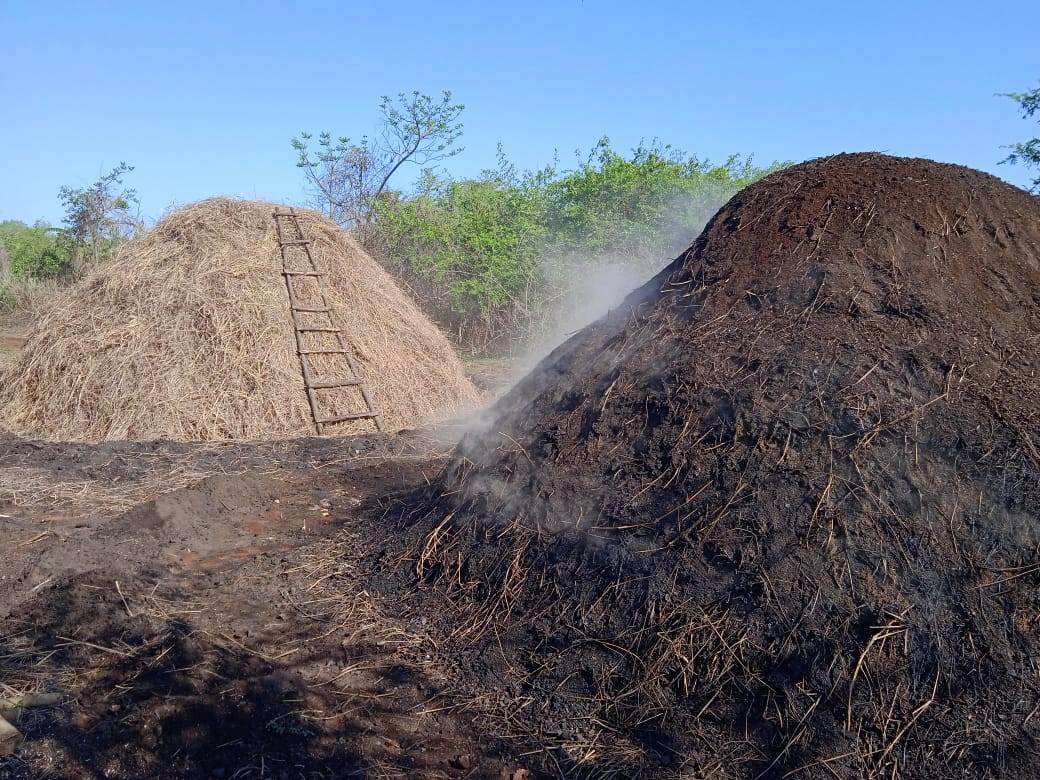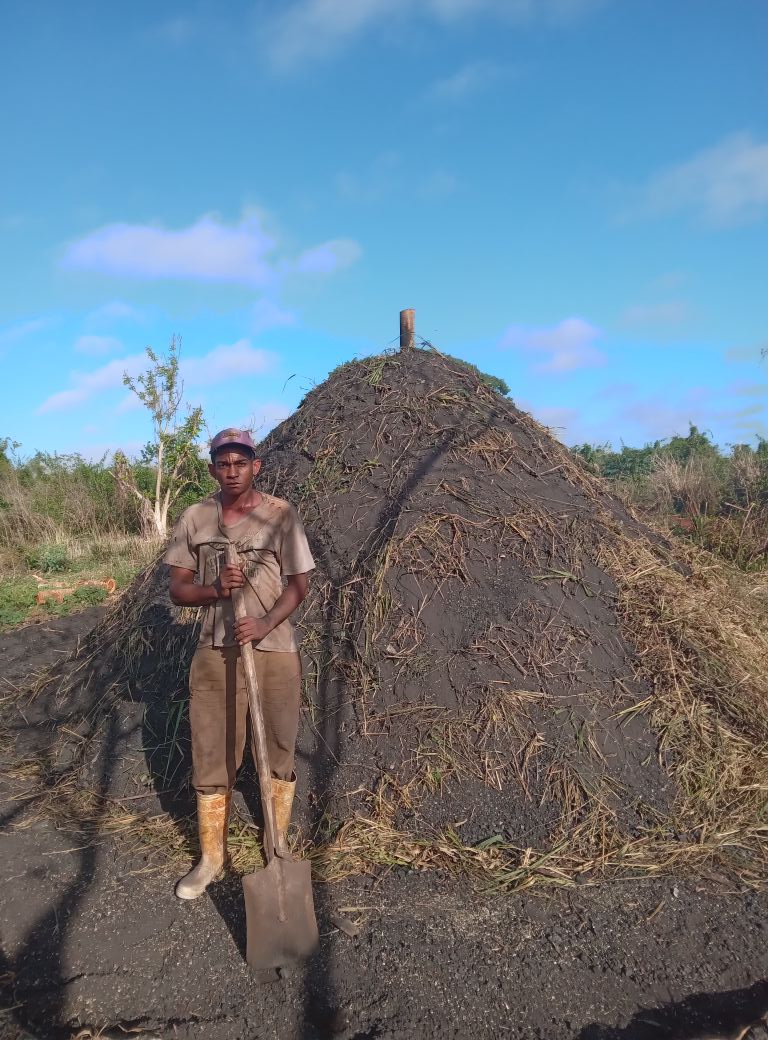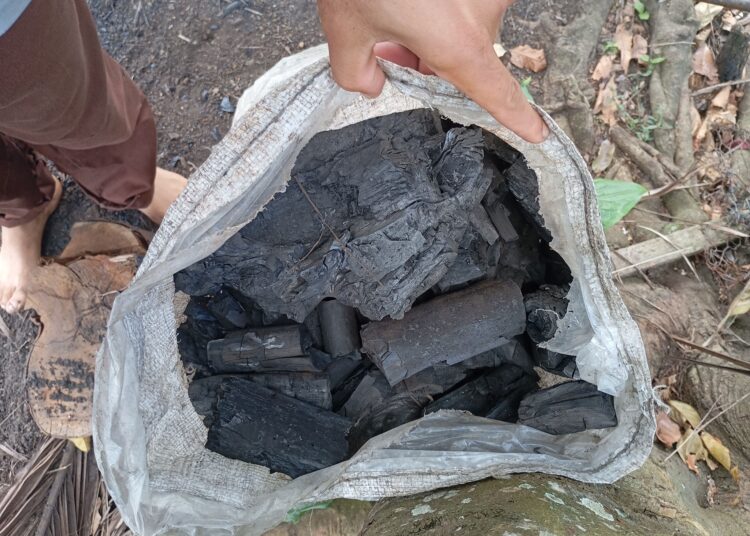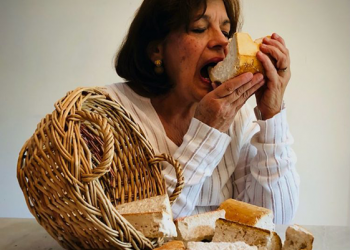And yes, we are in Holy Week. Holy Week brings back my own image of an 11-year-old boy standing in front of the bus door that would take him on the adventure of his first volunteer work. It also brings back the sound of my father’s words, whispering in my ear: “If you get on that bus, you have to come back on it and with everyone.”
It was a very typical version of that phrase the Roman soldiers used when they marched to their wars of conquest: “With the shield or on the shield.” Needless to say, I returned on the bus with all my classmates.
I tell this anecdote because it was during that first volunteer stint that I first had a personal encounter with marabú. Our task was to clear lands designated for intensive rational grazing, a technology recommended by a French scientist named Voisin, which seemed like it would be the solution for livestock farming in our country.
I never imagined that marabú and cows would accompany me throughout my life, and not because I dedicated myself to being a botanist or a cowboy.
At 11 years old, I discovered how hard marabú was. Later, and to my disappointment, I saw how the cows didn’t understand Voisin’s ideas. I also realized that marabú was not only hard but also very resilient. This toughness has made it an ideal plant for charcoal production.

Marabú charcoal has become a highly prized commodity because, in addition to being exportable, it is now an essential resource for cooking food in Cuban homes where electricity is rarely available and liquefied gas is only occasionally available.
Today, a bag of charcoal (marabú, guásima, almácigo, and even ipil ipil — a plant more invasive than marabú itself) sells on Havana’s first ring road for between 1,700 and 2,000 CUP.
I once heard that a hectare of marabú, “well planted” and “sufficiently mature,” can produce between 20 and 40 tons of dry matter. If the production process (pyrolysis) reaches an efficiency of 25%, between five and 10 tons of marabú charcoal could be obtained per hectare. How many hectares of marabú are planted today in the country?
Let’s say half a million; thus, calculating about eight tons per hectare, we have a production potential of 4 million tons of charcoal, of which a portion — perhaps 70%, to be optimistic — is of exportable quality. We would have about 280 million potential tons.
But of course, there’s no way to harvest all those hectares. If we “harvest” 20% (100,000 hectares) annually, we would have 800,000 tons, with about 560,000 of exportable quality. If the international price is around $300/ton, the math gives us an income of $168 million. Under our current conditions, that’s a lot of money and attracts more than a little attention.
And then, Ministry of Economy and Planning Resolution 25 of 2025 emerges, stating “to increase and control the country’s foreign currency earnings from the export of charcoal, which constitutes one of the exportable products with the greatest potential for increasing its production, marketing, and diversification, (which is why, JT), it is necessary to implement a foreign currency financing scheme for this activity.”
We’ve already discussed the potential for charcoal production. Let’s now identify the instruments that incentivize production and exports, and the “reorganization” of the activity, which is the purpose of the new resolution that allows “charcoal” to access a closed foreign currency financing scheme.
- A foreign currency financing scheme is approved for state-owned exporting entities that are part of the financial scheme for charcoal marketing. Therefore, they will not require subsidies, thus eliminating a distortion.
- “State-owned charcoal exporting entities begin to operate a new real foreign currency account in the banking system.” In other words, translated into the old terms, it is an account that has liquidity or is backed by liquidity. It is also very important to make it clear that state-owned exporting entities, with the foreign currency they retain, cannot conduct foreign currency transactions unrelated to the inputs and insurance necessary for the production and marketing of vegetable charcoal. Commercial banks will retain transactions that do not meet these requirements.
- “Payment to the producer is made to a real foreign currency account through which they have access to purchase options on the network of wholesale and retail foreign currency markets, including payment in USD for the fuel they require.” In other words, it’s not an unreal account, nor is it imaginary; it’s an account that is backed by liquidity. This is very important because, although producers cannot transfer money from that account to other foreign currency accounts or withdraw cash, it allows them to carry out transactions that previously they couldn’t, and in a much more transparent manner.
Export revenues are distributed as follows. Of every 100 cents of exports:
- 70 cents are received by the exporting state entity.
- 30 cents go to the central financing account. This 30% is returned to the producer in Cuban pesos at the “established rate.” It is striking that charcoal exporters have had their export income tax increased by 10%, which is clearly a disincentive that could be offset if this “established rate” were closer to the reality experienced by charcoal makers and their families.
The 70 cents retained by the state exporting entity are distributed as follows:
- 54% goes to the producer (charcoal maker). That is, they receive 37.8 cents, or almost 38% of the total income (100 cents).
- 46%, or 32.8 cents (33% of the 100 cents of total income) in the value chain for use in the contracting process with the rest of the entities involved in the vegetable charcoal marketing process, as well as to secure the material or financial resources required to maintain the value chain.
Adding up the cents, 38 cents go to the producer, while 62 cents remain in the hands of the State, either through export taxes or withholdings from the exporting entity.
Let’s return to the 30 cents returned in Cuban pesos (CUP) to the producer, deposited in a bank account. The rate that will be used is not explicitly stated in the resolution. Today, in our country, we have managed to have at least two official rates: 25 CUP to the dollar and 120 CUP to the dollar. We all know, however, that in everyday life we live with another rate that devalues the CUP much more.
- i) At a rate of 25 CUP to the dollar, those 30 cents become 7.5 CUP.
- ii) Meanwhile, at a rate of 120 CUP to the dollar, those 30 cents become 36 CUP.
Those same 30 cents sold on the informal market at a rate of 320 CUP become 96 CUP.
Depending on the rate used, the producer (charcoal maker) loses 87.5 cents for every dollar of exports in case (i) and 60 cents of a CUP in case (ii).
If that producer exports 50 tons of charcoal at 300 USD/ton, how much does he lose due to withholding taxes and exchange rates? In case (i), the producer (charcoal maker) loses 1,312,500 CUP, and in case (ii), 900,000 CUP.

Marabú is very hard; the charcoal extracted from it is as hard as marabú. In Cuba, charcoal production is practically manual. Anyone who has ever been inside a marabú field knows this perfectly well. Anyone who has seen a charcoal kiln tended also knows perfectly well how much effort and sleepless nights it requires. We don’t know how much of those 38 cents goes to the machete wielder and the one in charge of the oven.
Once, we had a cow that produced sugar, and we managed to dry it off; then we had another that generated income from tourism, and we dried that one too. Later, a new one appeared that produced biotech medicines, and it seems we’re not feeding it the way it needs either. We still have one that generates income from professional services, which we also don’t feed properly. The cowboys know this: when more milk is extracted than necessary, the cows dry up.
The country’s need for income is in no way debatable; there’s no real money, let’s face it, but if the pump culture persists, we’ll continue to dry up all the cows, even those that, like marabú, don’t need special care, quite the opposite.










